Fault Diagnosis of Diesel Engine Valve Clearance Based on Wavelet Packet Decomposition and Neural Networks
Abstract
:1. Introduction
- (1)
- In this paper, a method of mixed training for the model by injecting different levels of noise is proposed, so that the model has a better diagnostic accuracy for fault signals with different levels of noise. In the experiment, nine kinds of valve clearance deviation states were set, and different noises were injected into the collected data to expand the data set. The wavelet packet decomposition algorithm was used to decompose the time-domain signal into three layers of eight frequency sub-band signals. The autoregressive power spectrum density estimation was used to analyze the power spectrum of the sub-band signal, and then the power spectrum integral of each sub-band signal was used to obtain the energy value of the sub-band signal. In this way, eight values could be obtained as the fault eigenvalue of the signal.
- (2)
- A neural network model was designed using the TensorFlow machine learning platform to classify the fault eigenvalues. During the training process, the test data set was divided into three parts, namely the training set, the verification set, and the test set, and the dropout layer was added to avoid the overfitting phenomenon of the neural network. Finally, the average accuracy of the experimental model reached 82.4%, and achieved good experimental results.
2. Data Acquisition of Valve Clearance Fault
2.1. Vibration Signal Acquisition
2.2. Noise Injection
3. Wavelet Packet Decomposition of Vibration Signals
3.1. Wavelet Packet Decomposition
3.2. Decomposition of Vibration Signal
3.3. Power Spectral Density Estimation
3.4. Eigenvalue Extraction
4. Establishment of Neural Network
4.1. Establishment of Artificial Neural Network (ANN)
4.2. Training and Testing
- (1)
- Enter the training data into the network to obtain the excitation output , means a θ parameterized network model.
- (2)
- Calculate the error between the excitation output and the target output, , g represents the error function.
- (3)
- Using TensorFlow automatic derivative technology to obtain the gradient of the θ, .
- (4)
- Update the parameters according to gradient descent algorithm, η * , where η is the learning rate.
5. Conclusions
Author Contributions
Funding
Data Availability Statement
Conflicts of Interest
References
- Fei, H.-Z.; Zhang, S.-J.; Liu, L.; Li, X.-M.; Ma, X.-Z. Study on Feature Extraction for Diesel Engine Valve Faults. Chin. Intern. Combust. Engine Eng. 2016, 37, 145–150. [Google Scholar]
- Li, Y.-L.; Wang, L.-Y.; Luan, Z.-G.; Chen, T. Fault Diagnosis of Valve Clearance Based on Time-Domain Characteristics of Vibration. China Pet. Mach. 2014, 42, 48–51. [Google Scholar]
- Wang, H.; Wang, L.; Tian, R. Structural damage detection using correlation functions of time domain vibration responses and data fusion. Eng. Mech. 2020, 37, 30. [Google Scholar]
- Jiang, Z.; Wei, D.; Zhang, J.; Mao, Z. A study on valve clearance anomaly feature extraction of diesel engines based on VMD and SVD. J. Vib. Shock 2020, 39, 23–30. [Google Scholar]
- Bi, F.; Tang, D.; Zhang, L.; Li, X.; Ma, T.; Yang, X. Diesel Engine Fault Diagnosis Method Based on Optimized Variational Mode Decomposition and Kernel Fuzzy C-means Clustering. J. Vib. Meas. Diagn. 2020, 40, 853–858. [Google Scholar]
- Sun, T.; Chen, Y.Q.; Zhou, Y. Fault prediction of marine diesel engine based on time series and support vector machine. In Proceedings of the International Conference on Intelligent Design (ICID), Xi’an, China, 11–13 December 2020; pp. 75–81. [Google Scholar] [CrossRef]
- Duo, M.; Ji, G. Bearing fault diagnosis based on Hilbert-Huang transform and residual neural network. Manuf. Autom. 2022, 44, 20–23. [Google Scholar]
- Liu, Y.L.; Chang, W.B.; Zhang, S.Y.; Zhou, S.H. Fault Diagnosis and Prediction Method for Valve Clearance of Diesel Engine Based on Linear Regression. In Proceedings of the Annual Reliability and Maintainability Symposium (RAMS), Palm Springs, CA, USA, 27–30 January 2020. [Google Scholar]
- Yang, J.Z.; Zhou, C.J. A Fault Feature Extraction Method Based on LMD and Wavelet Packet Denoising. Coatings 2022, 12, 156. [Google Scholar] [CrossRef]
- Jia, J.; Ren, G.; Mei, J.; Chang, C. Fault Diagnosis of Diesel Engine Misfire Based on VMD and XWT. Chin. Intern. Combust. Engine Eng. 2020, 41, 57–63. [Google Scholar] [CrossRef] [Green Version]
- Zhang, L.; Peng, X.; Xiong, G.; Wang, L.; Huang, J.; Hu, J. Intelligent diagnosis of locomotive wheelset bearings using MSE and PSO-SVM. J. Rail Way Sci. Eng. 2021, 18, 2408–2417. [Google Scholar]
- Tabaszewski, M.; Szymanski, G.M. Engine valve clearance diagnostics based on vibration signals and machine learning methods. Eksploat. I Niezawodn.-Maint. Reliab. 2020, 22, 331–339. [Google Scholar] [CrossRef]
- Tan, R. Study on Valve Clearance Fault Diagnosis for Internal Combustion Engine; Chongqing University of Posts and Telecommunications: Chongqing, China, 2017. [Google Scholar]
- Zhao, M.H.; Zhong, S.S.; Fu, X.Y.; Tang, B.P.; Pecht, M. Deep Residual Shrinkage Networks for Fault Diagnosis. IEEE Trans. Ind. Inform. 2020, 16, 4681–4690. [Google Scholar] [CrossRef]
- Jiang, J.; Hu, Y.; Ke, Y.; Chen, Y. Fault diagnosis of diesel engines based on wavelet packet energy spectrum feature extraction and fuzzy entropy feature selection. J. Vib. Shock 2020, 39, 273. [Google Scholar]
- Tian, N.; Fan, Y.; Wu, J.; Huang, G.; Wang, X. Check valve s fault detection with wavelet packet s kernel principal component analysis. J. Comput. Appl. 2013, 33, 291–294. [Google Scholar]
- Chen, D.; Lin, J.; Yi, X.; Sun, J.; Jiang, P.; Li, C. Classification of underwater acoustic signals based on time-frequency map features of wavelet packet and convolutional neural network. Tech. Acoust. 2021, 40, 336–340. [Google Scholar]
- Guo, T.T.; Zhang, T.P.; Lim, E.; Lopez-Benitez, M.; Ma, F.; Yu, L.M. A Review of Wavelet Analysis and Its Applications: Challenges and Opportunities. IEEE Access 2022, 10, 58869–58903. [Google Scholar] [CrossRef]
- Babu, T.N.; Himamshu, H.S.; Kumar, N.P.; Prabha, D.R.; Nishant, C. Journal Bearing Fault Detection Based on Daubechies Wavelet. Arch. Acoust. 2017, 42, 401–414. [Google Scholar] [CrossRef] [Green Version]
- Shu, Q.; Fan, Y.; Xu, F.W.; Wang, C.; He, J.Y. A harmonic impedance estimation method based on AR model and Burg algorithm. Electr. Power Syst. Res. 2022, 202, 107568. [Google Scholar] [CrossRef]
- Chen, G.Y.; Gan, M.; Chen, G.L. Generalized exponential autoregressive models for nonlinear time series: Stationarity, estimation and applications. Inf. Sci. 2018, 438, 46–57. [Google Scholar] [CrossRef]
- Jin, X.B.; Wang, Y.W.; Hong, W.J.; Assoc Comp, M. Power Spectrum Estimation Method Based on Matlab. In Proceedings of the 3rd International Conference on Vision, Image and Signal Processing (ICVISP), Vancouver, BC, Canada, 26–28 August 2019. [Google Scholar] [CrossRef]
- Zhao, J.; Ning, J.; Ning, Y.; Chen, C.; Li, Y. Feature extraction of mechanical fault diagnosis based on MPE-LLTSA. J. Vib. Shock 2021, 40, 136–145. [Google Scholar]
- Zhou, Z.-H. Machine Learning; Tsinghua University Publishing House: Beijing, China, 2019. [Google Scholar]
- Wu, Y.C.; Feng, J.W. Development and Application of Artificial Neural Network. Wirel. Pers. Commun. 2018, 102, 1645–1656. [Google Scholar] [CrossRef]
- Zhang, J.; Sun, S.; Zhu, X.; Zhou, Q.; Dai, H.; Lin, J. Diesel engine fault diagnosis based on an improved convolutional neural network. J. Vib. Shock 2022, 41, 139–146. [Google Scholar]
- Pi, J.; Liu, P.; Ma, S.; Liang, C.; Meng, L.; Wang, L. Aero-engine Bearing Fault Diagnosis Based on MGA-BP Neural Network. J. Vib. Meas. Diagn. 2020, 40, 381–388. [Google Scholar]
- Zhou, Y.; Qiu, X.; Guo, Z. Fault diagnosis of engine valve mechanism based on deep learning. Manuf. Autom. 2017, 39, 89–93. [Google Scholar]
- Li, S. TensorFlow Lite: On-Device Machine Learning Framework. J. Comput. Res. Dev. 2020, 57, 1839–1853. [Google Scholar]
- Wolk, K.; Palak, R.; Burnell, E.D. Soft Dropout Method in Training of Contextual Neural Networks. In Proceedings of the 12th Asian Conference on Intelligent Information and Database Systems (ACIIDS), Phuket, Thailand, 23–26 March 2020; Volume 12034, pp. 353–363. [Google Scholar] [CrossRef]
- Hinton, G.E.; Srivastava, N.; Krizhevsky, A.; Sutskever, I.; Salakhutdinov, R.R. Improving neural networks by preventing co-adaptation of feature detectors. Comput. Sci. 2012, 3, 212–223. [Google Scholar]
- Bengio, Y.; Lecun, Y.; Hinton, G. Deep Learning for AI. Commun. ACM 2021, 64, 58–65. [Google Scholar] [CrossRef]
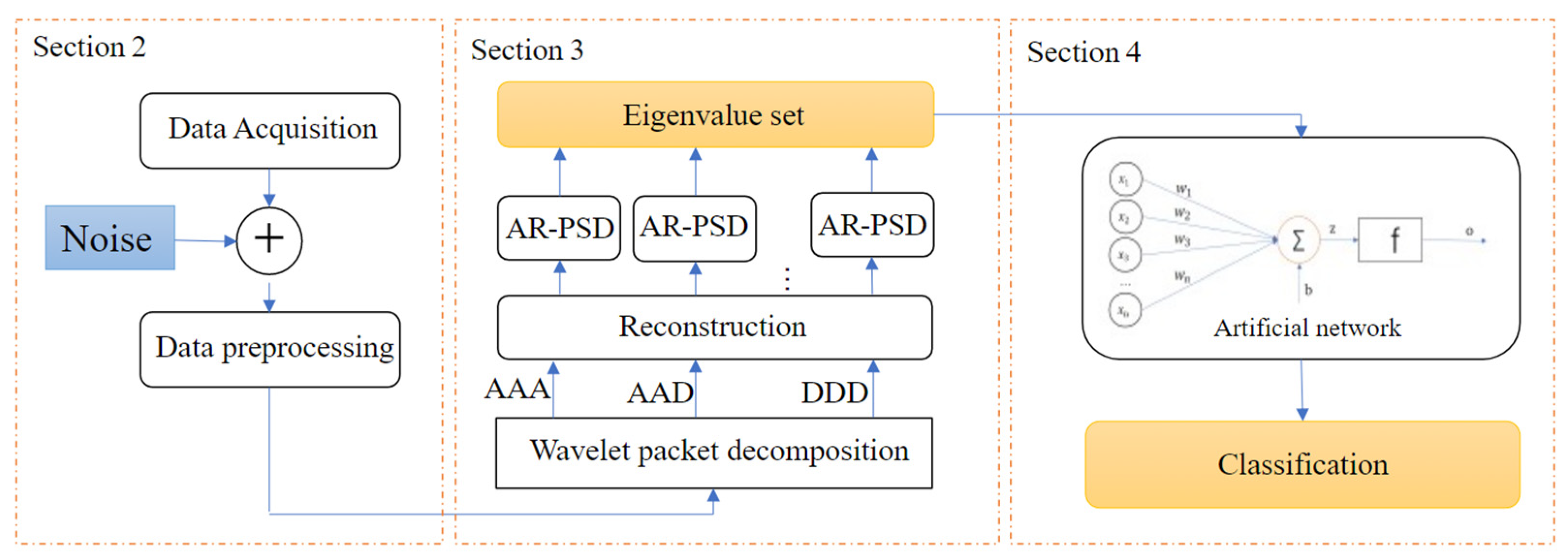

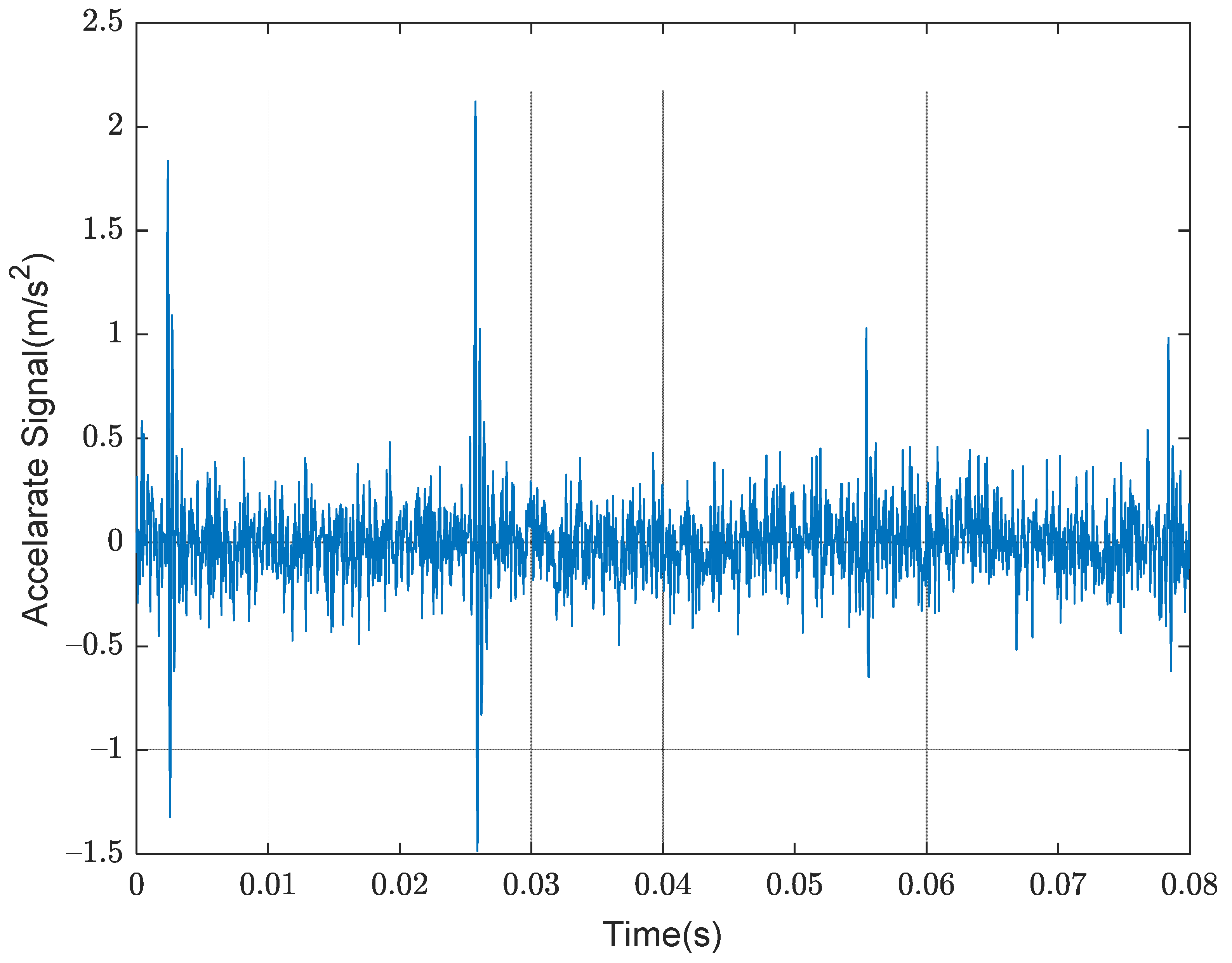
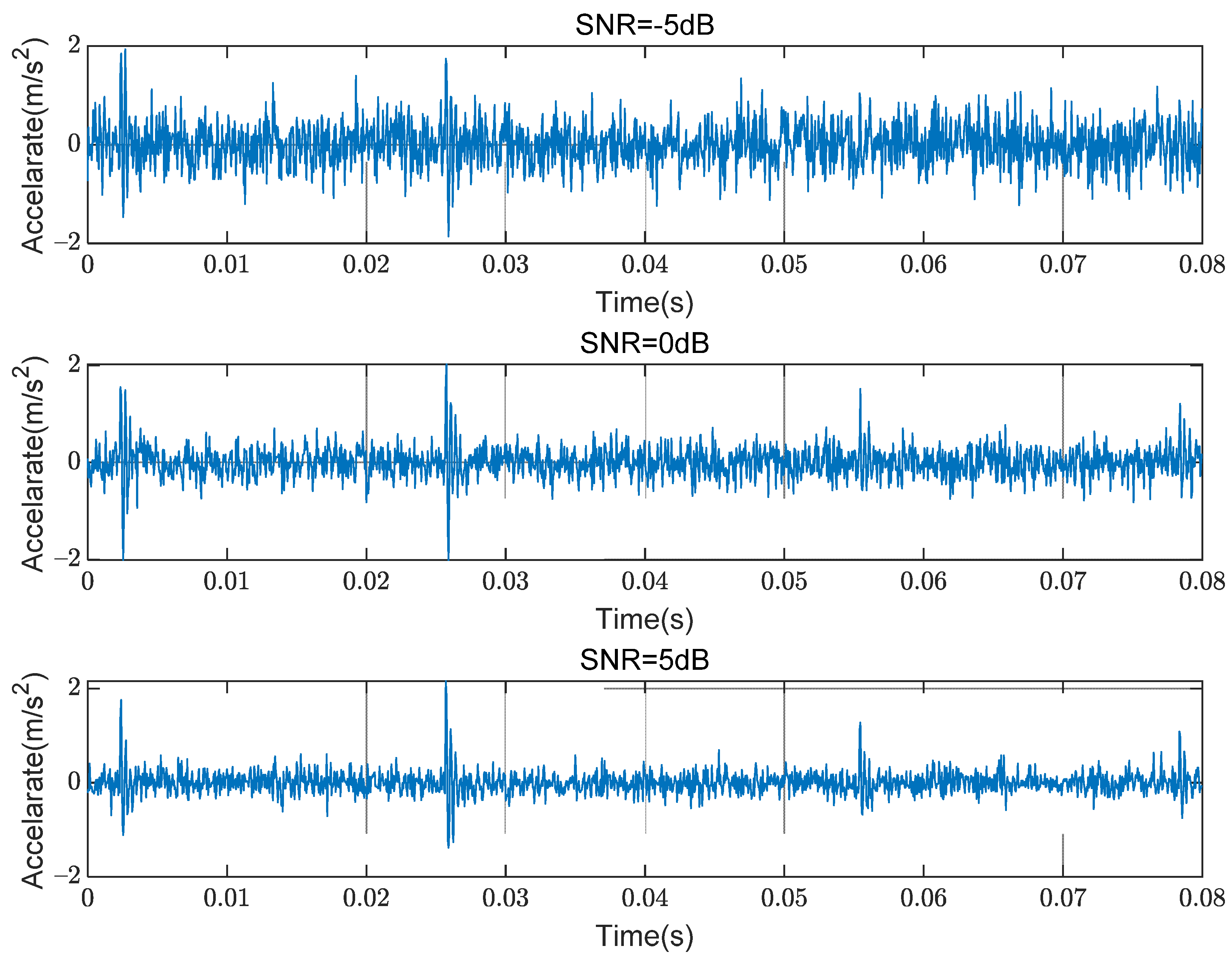
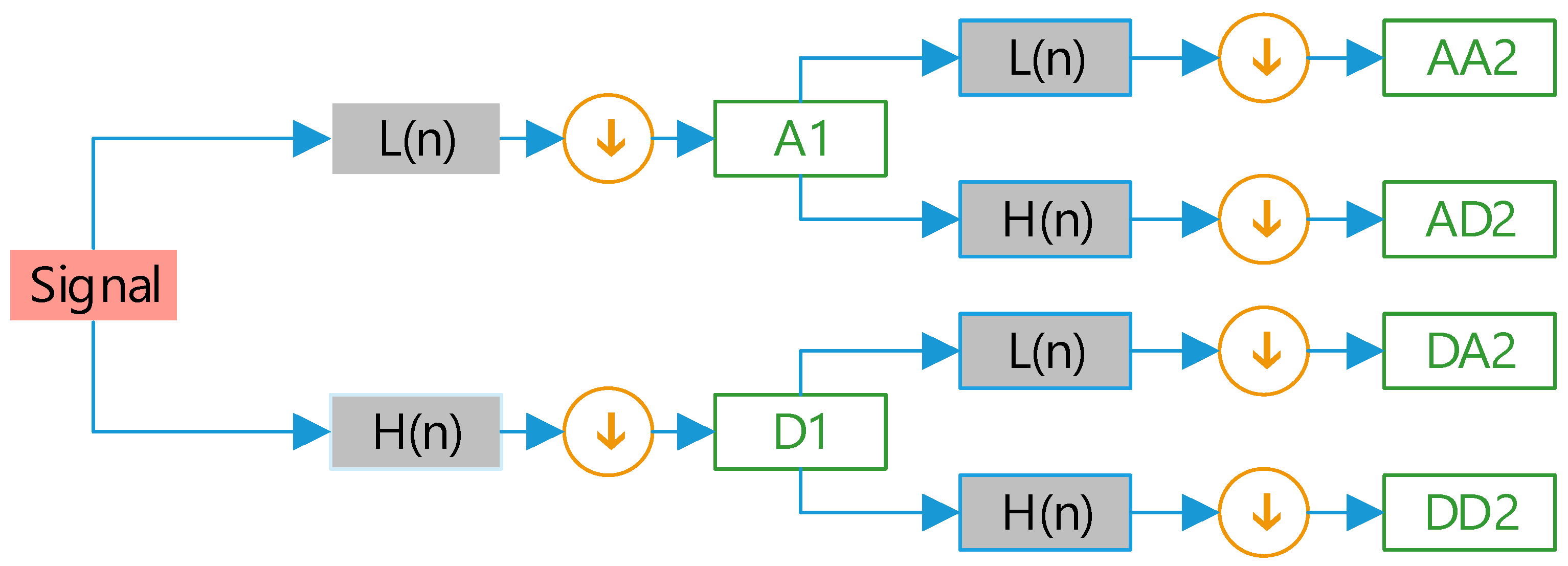

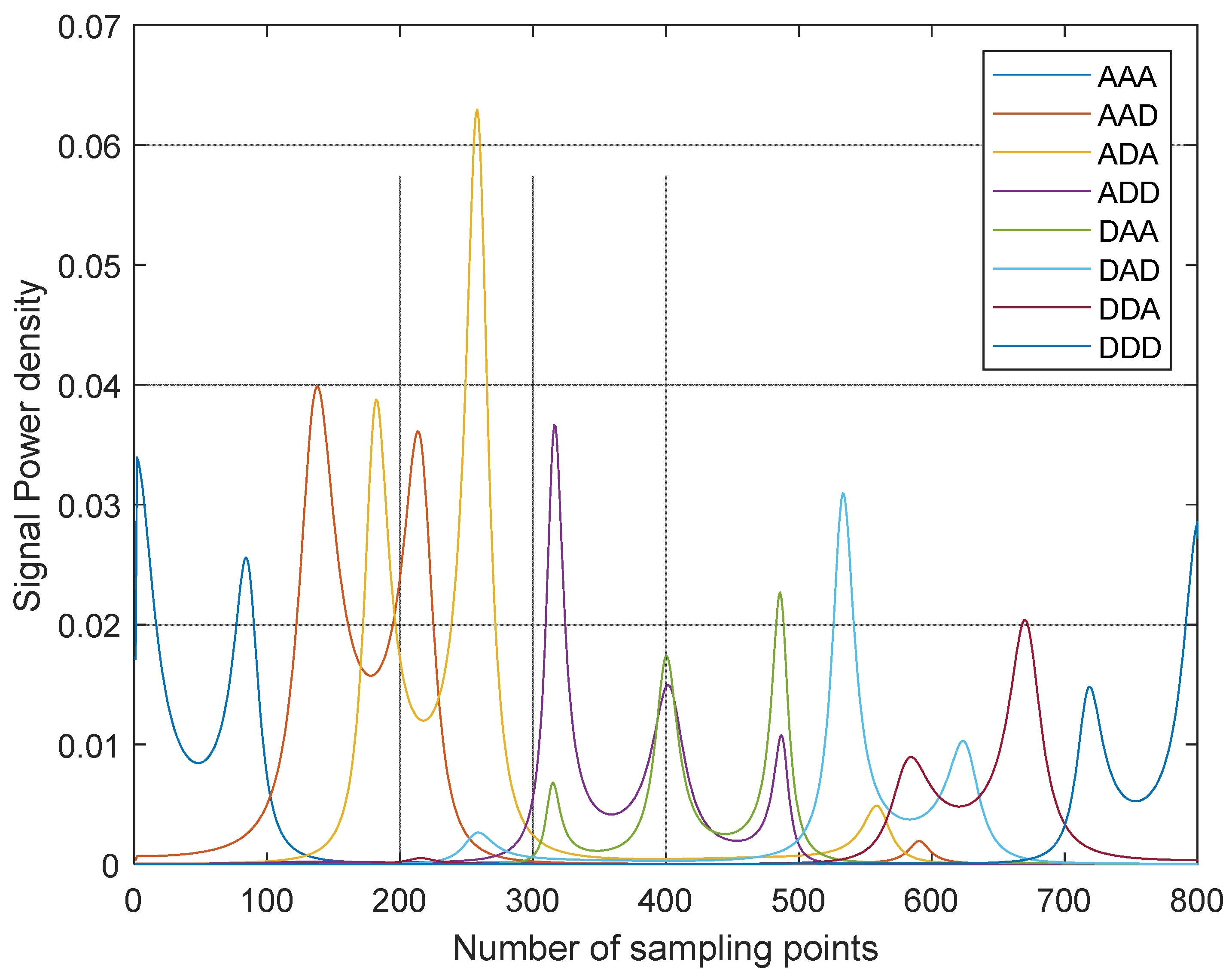
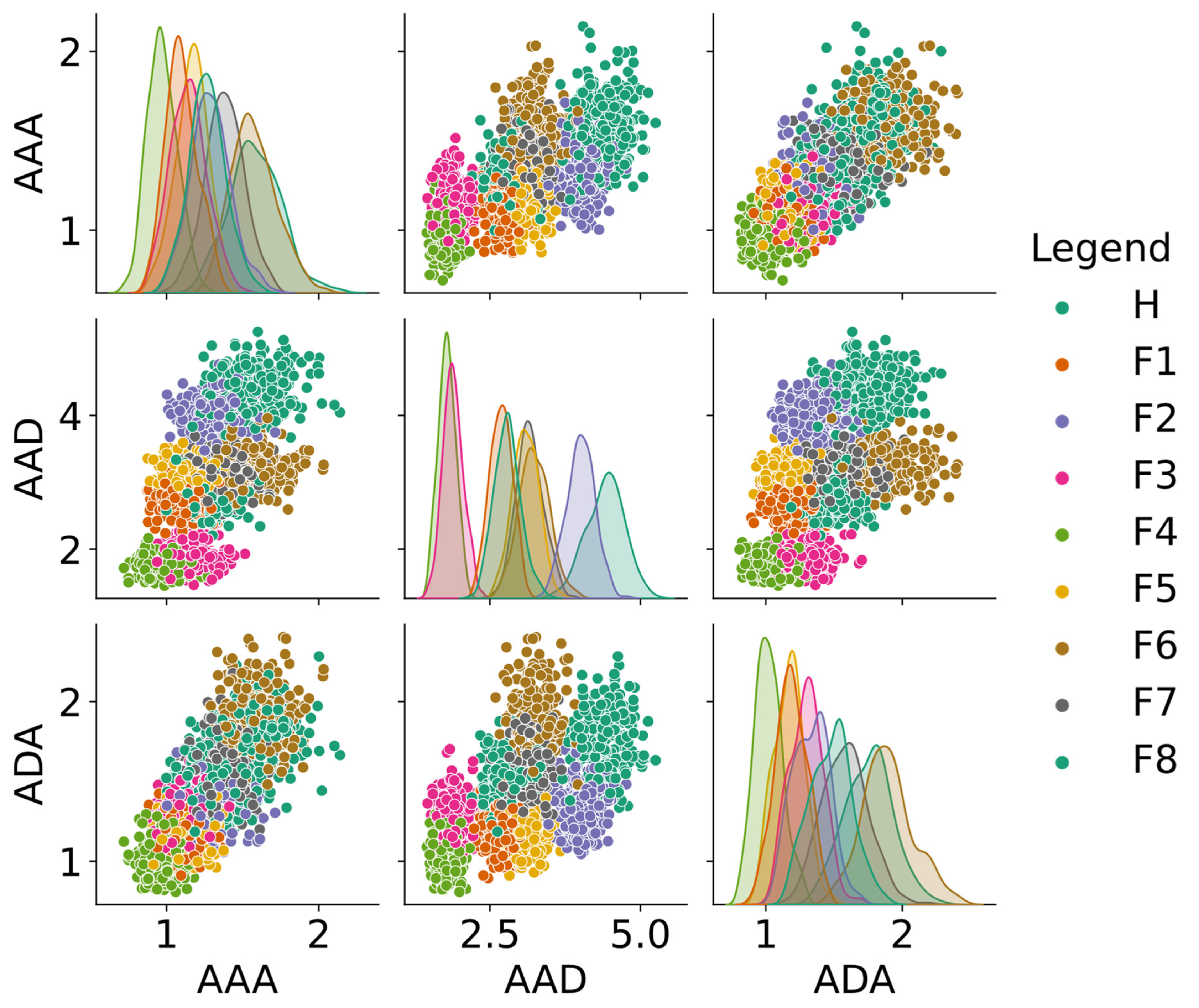
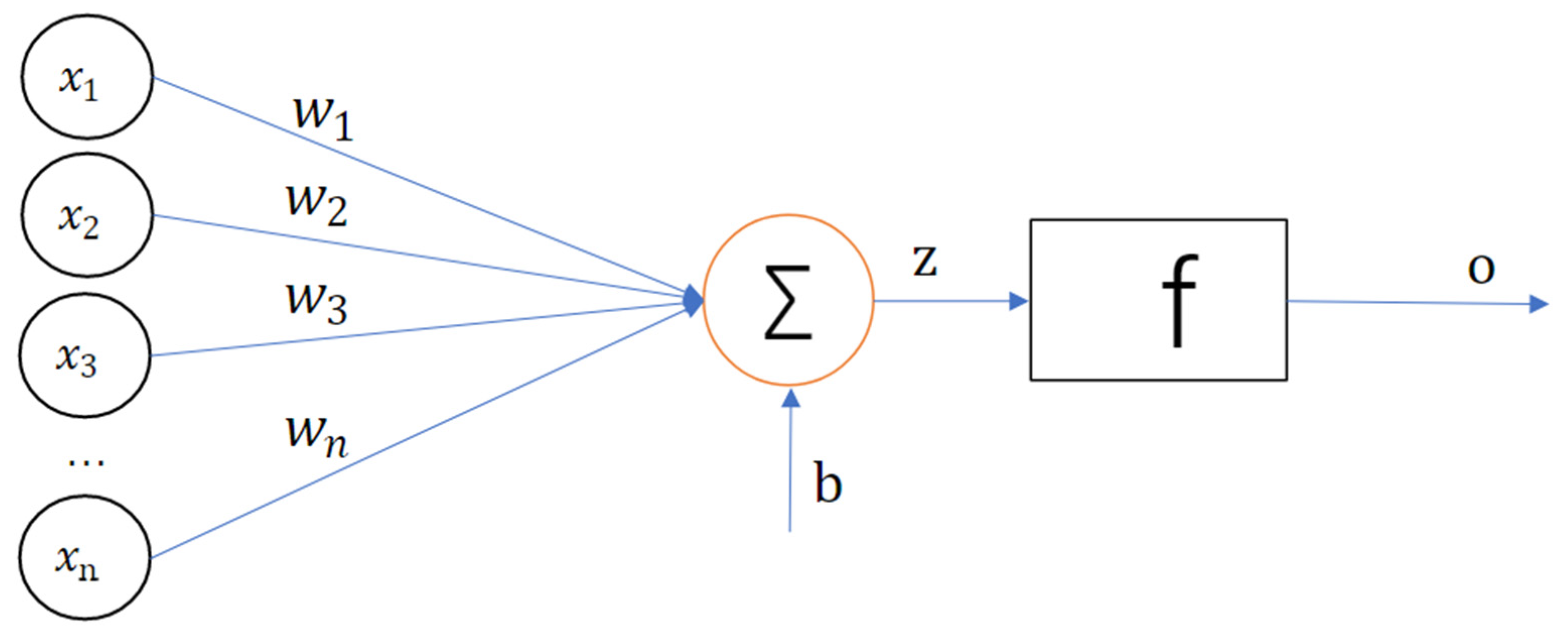






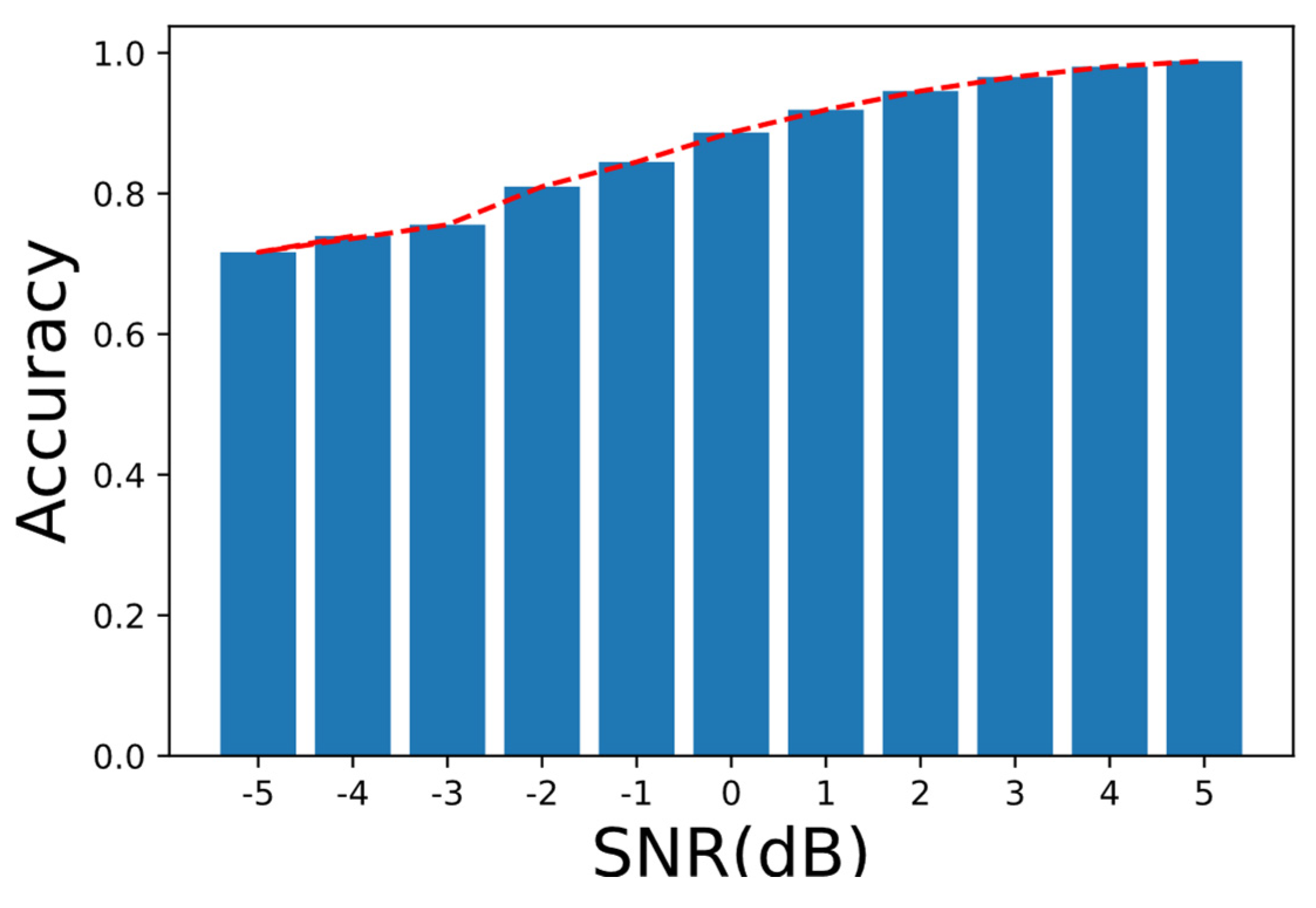
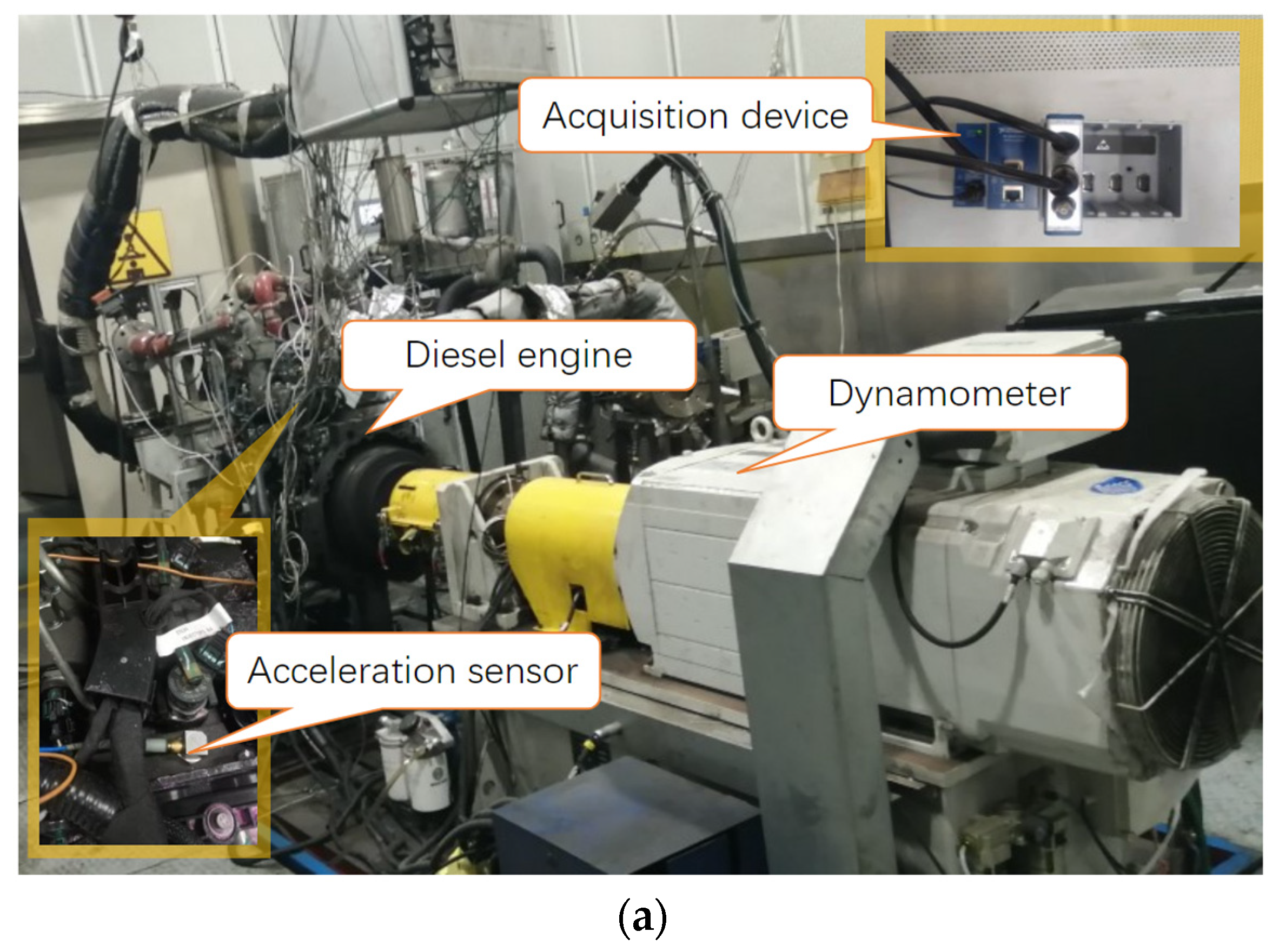

| Valve Clearance | Smaller | Normal | Larger |
|---|---|---|---|
| Inlet Valve | 2.8 mm | 3 mm | 3.2 mm |
| Exhaust Valve | 3.7 mm | 4 mm | 4.3 mm |
| Inlet Valve Clearance | Exhaust Valve Clearance | State | |
|---|---|---|---|
| 1 | Smaller | Smaller | F1 |
| 2 | Smaller | Normal | F2 |
| 3 | Smaller | Larger | F3 |
| 4 | Normal | Smaller | F4 |
| 5 | Normal | Normal | H |
| 6 | Normal | Larger | F5 |
| 7 | Larger | Smaller | F6 |
| 8 | Larger | Normal | F7 |
| 9 | Larger | Larger | F8 |
| E1 | E2 | E3 | E4 | E5 | E6 | E7 | E8 | |
|---|---|---|---|---|---|---|---|---|
| H | 0.7160 | 2.3223 | 0.8822 | 3.3718 | 0.3739 | 0.534 | 0.6552 | 0.864 |
| F1 | 0.7944 | 1.1479 | 1.2521 | 3.3577 | 0.5722 | 0.7616 | 0.4462 | 0.7738 |
| F2 | 0.8091 | 1.2665 | 1.1851 | 4.2217 | 0.4968 | 0.9436 | 0.4942 | 1.0201 |
| F3 | 0.7288 | 2.9697 | 0.9679 | 2.4169 | 0.3508 | 0.4465 | 0.6022 | 0.9741 |
| F4 | 0.9931 | 1.5380 | 1.1578 | 2.0778 | 0.3698 | 0.5051 | 0.5139 | 0.8754 |
| F5 | 0.7784 | 1.6878 | 1.2514 | 2.9799 | 0.5549 | 0.7694 | 0.4834 | 1.2600 |
| F6 | 0.8778 | 2.9643 | 0.8519 | 3.9847 | 0.4355 | 0.8183 | 0.9809 | 1.2034 |
| F7 | 1.0558 | 1.5968 | 1.2071 | 3.7308 | 0.4218 | 0.8536 | 0.7944 | 1.1920 |
| F8 | 1.0250 | 2.1235 | 1.1875 | 4.9376 | 0.7192 | 1.2744 | 0.7266 | 1.3248 |
Disclaimer/Publisher’s Note: The statements, opinions and data contained in all publications are solely those of the individual author(s) and contributor(s) and not of MDPI and/or the editor(s). MDPI and/or the editor(s) disclaim responsibility for any injury to people or property resulting from any ideas, methods, instructions or products referred to in the content. |
© 2023 by the authors. Licensee MDPI, Basel, Switzerland. This article is an open access article distributed under the terms and conditions of the Creative Commons Attribution (CC BY) license (https://creativecommons.org/licenses/by/4.0/).
Share and Cite
Kuai, Z.; Huang, G. Fault Diagnosis of Diesel Engine Valve Clearance Based on Wavelet Packet Decomposition and Neural Networks. Electronics 2023, 12, 353. https://doi.org/10.3390/electronics12020353
Kuai Z, Huang G. Fault Diagnosis of Diesel Engine Valve Clearance Based on Wavelet Packet Decomposition and Neural Networks. Electronics. 2023; 12(2):353. https://doi.org/10.3390/electronics12020353
Chicago/Turabian StyleKuai, Zhenyi, and Guoyong Huang. 2023. "Fault Diagnosis of Diesel Engine Valve Clearance Based on Wavelet Packet Decomposition and Neural Networks" Electronics 12, no. 2: 353. https://doi.org/10.3390/electronics12020353




